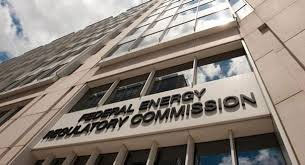In a landmark ruling, the US Court of Appeals has opened the door to a sweeping overhaul of our country’s aging grid and much more renewable energy.
It upheld the Federal Energy Regulatory Commission’s (FERC) "Order 1000," one of the most complex and controversial rules ever issued by the commission. It reforms how transmission infrastructure projects are planned and paid for across the country, requiring regional planning instead of the current state- and utility-centric model," reports Energy & Environment (E&E).
Not only does Order 1000 require regional and inter-regional transmission planning, it requires utilities to take into account state policies, such as Renewable Portfolio Standards and Efficiency Standards. It also allocates the costs of new transmission lines more fairly among customers, and builds-in competition for building those projects.
"The unanimous court decision is a major win for clean energy and the environment. It affirms that grid operators must consider carbon standards and other clean energy policies in planning the electric grid. The decision also affirms FERC’s commonsense finding that regional transmission planning is better for consumers and the environment," says John Moore, senior attorney Natural Resources Defense Council’s Sustainable FERC Project.
"Our nation needs substantial investment in transmission infrastructure to adapt to changes in its resource mix and environmental policies, says Cheryl LaFleur, FERC Chair.
Since FERC issued the rule in 2011, state regulators, utilities, regional transmission organizations and industry groups have challenged every aspect, claiming FERC overstepped its authority. The next step could be the Supreme Court.

John Moore explains the importance of the ruling:
Among Order 1000’s most important reforms is that it requires transmission-owning utilities in regions without electricity markets, like the Southeast and most of the West, to create and participate in regional planning processes, complete with more transparency and stakeholder participation. FERC’s basic idea, supported by evidence in the Order 1000 rulemaking record, is that regional grid planning will result in more cost-effective and efficient solutions than many different and uncoordinated local plans.
The notion of regional planning isn’t such a big deal in parts of the country like the Northeast, Mid-Atlantic, Midwest, and California, where regional transmission organizations like PJM and MISO started doing regional planning years ago. But in the Southeast, where Southern Company dominates, or in most of the West, each utility mostly stuck to local planning for how they will move electricity to their customers. They didn’t consider whether more regional transmission or non-transmission solutions (like energy efficiency or new renewables), coordinated with their neighboring utilities, could help meet the needs of their customers while saving those customers money.
Order 1000 includes another important reform especially critical for the Sustainable FERC Project and its partners: requiring local and regional grid planners to consider the impacts of federal, state, and local public policies on grid needs. State renewable energy, energy efficiency, and carbon pollution standards are examples, as is any other law or regulation likely to affect future grid needs.
Listening to some of the opponents of Order 1000, I couldn’t help but think that they want to turn the clock backward, to a world where local power was the only power, environmental and energy policies had no relevance to grid planning, and the incumbent utilities held most of the planning cards.
Read our article, US Solar Breaks Through to New Heights, FERC Helps.
Learn about The Sustainable FERC Project, which is working to expand renewable energy in the US grid:
